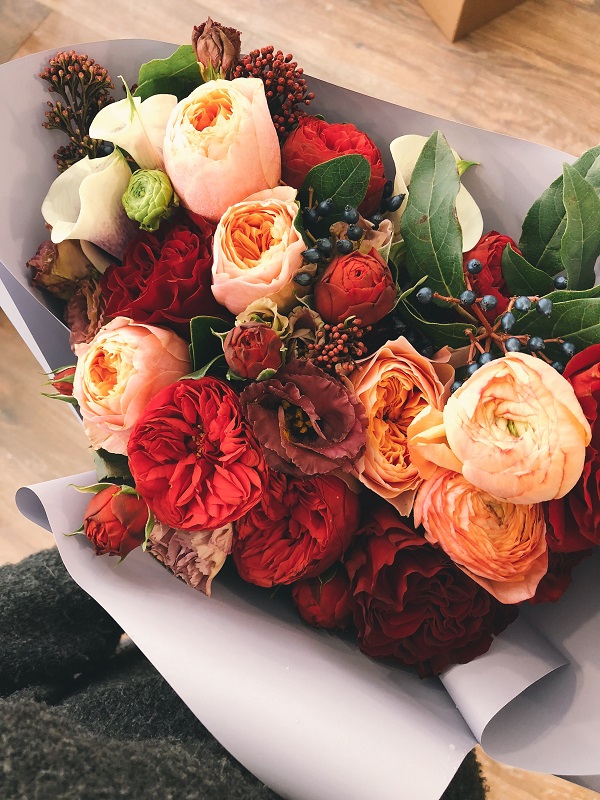Garden-Style Flower Designs

During every period of civilization, in every part of the world, people shaped and redesigned the environment to create places of beauty and respite, the places we came to know as gardens. This natural appreciation for growth and harmony gives Garden-style florals a timeless appeal.
Garden-style floral designs are very natural and look as if the flowers were picked right out of the garden. These designs are more foliage-focused and sprawling, often spilling out of the container that is used.
Unlike other designs, Garden-style florals are not tight and clustered or overly structured. These designs are reminiscent of flowers on a gazebo, delicate, trailing flowers and vines winding through a trellis. For inspiration, look to rambling gardens that are a mix of intentional buds and wildflowers.
The Garden-style designs of the present are an ode to the unique, handmade designs that were created before floral foam. The plant materials are placed in an abundance of colors and forms with thought given to how they would grow in nature. Foliage and stems create interest and maintain the form characteristic of this style.
Some popular flower choices for Garden-style designs are garden roses, scented geraniums, spray roses, sunflowers and dahlias.
Often utilizing seasonal blooms, Garden-style changes with each season to reflect the outside world. In the spring, bulb flowers like tulips and lilies capture the feeling of innocence and renewal. From summer to fall, sunflowers can be a bright addition to your garden-style creation.
Our wholesalers at San Diego Florist Supplies, Inc. in San Diego, CA have everything you need to create memorable Garden-style designs.
Setting up the Structure
When creating Garden-style arrangements, you should refrain from starting your design with foliage. Starting with the foliage will inevitably mean that you will be using your flowers to accent your foliage when you should be doing the opposite. Instead, as you place the flowers, layer in foliage. That way, foliage remains the accent, and using less foliage will increase your profit margins.
When you begin your design, start with the most expensive flower and put it in a prominent place, so it will be noticed. Continue adding greenery and flowers to build mass and distribute color and texture throughout. Add some buds or foliage wherever you need color but not in a way that is too fixed or formal.
Whether you use floral foam or chicken wire or floral netting for your structure depends on your design. One of the benefits of using floral wire netting is that is creates a design that is looser than foam and allows you to put your flowers directly into the fresh water.
The popular choices for Garden-style containers are clear glass and ceramic. Glass vessels with a more retro or historic feel will give a Garden-style arrangement more of an undone and updated look. Clear glass is favored by younger people as it has a recycled look, and the youth of today are drawn to items that are repurposed and reused.
Garden-style arrangements are meant to appear free, as if the pieces were pulled out of nature only to fall right into place. As a result, don’t overdo it with styling or the illusion will be shattered. Keep it natural and not too stiff or contrived.
If you are looking for a way to update the look, grouping or clustering is an option that will not take away from the overall design style. Consider placing textural flowers or greens together so they become more visible.
Being Green
Greenery is an important part of Garden-style designs. These designs are loose, natural and textured. The unstructured nature of these designs allows for plenty of creativity, and there are no set guidelines for the ratio of flowers to the amount of greenery used. Garden-style is a healthy mix of both flowers and greenery. When seeking out foliage, choose greenery that will drape.
Flowing greenery weaving its way around petals brings the flowers to life without stealing the show. If you are looking for greenery that is easy to work with as it is flexible and can be used in any type of arrangement, look no further than some of the popular options that are available in a variety of colors and shapes.
Eucalyptus
Eucalyptus is a recognizable plant with several variations in shape and size. Eucalyptus has a nice scent and works well as a filler. For large, grandiose arrangements, the tall, round leaf variety can add height and interest. For smaller arrangements, the silver dollar eucalyptus adds texture without overwhelming the rest of the arrangement.
Silver dollar eucalyptus can be used in larger arrangements, but the branches can be a bit heavy and somewhat difficult to control. If using the silver dollar in a larger bouquet, use floral wire to keep it together.
Ferns
Ferns add great texture and mystery to garden-style floral designs and come in a variety of shapes and sizes. They also symbolize fidelity and sincerity, making them a meaningful addition to any arrangement. The Leatherleaf fern is thick with a triangle shape, which makes it great for adding volume while the tree fern is thin and wispy, making it incredibly easy to use.
Italian Ruscus
A wonderful option as it is cost effective, versatile and holds up without water is Italian Ruscus. Italian Ruscus is a pop of intense green that makes it a gorgeous contrast when placed with flowers and lighter greens. Italian Ruscus has a delicate, whimsical look.
Garden-style Foliage and Flower Facts
One large piece of Eucalyptus or a similar type of foliage can be cut into smaller extensions making Garden-style a look that is easy to achieve without having to invest in an abundance of greenery. The same is true for the flowers. This style has the appearance of a lot of florals when in fact, achieving this look requires minimal stems.
If you set out your florals and greenery before you begin, a Garden-style arrangement is a quick and fun experiment in utilizing nature to inspire your creativity.
Today’s Garden-style is a clean look that is less formal. It is composed of loose, airy extensions and interesting layers. These natural designs reflect the growing appreciation for the beauty of the natural world and the minimalist impulses that coincide with that appreciation.
Although the designs seem completely unstructured, placing the flowers and foliage in just the right areas and draping the greenery over the vessel in all the right places, leads to a finished, polished design. This style does not demand heaps of flowers and foliage; it just demands your creativity.
